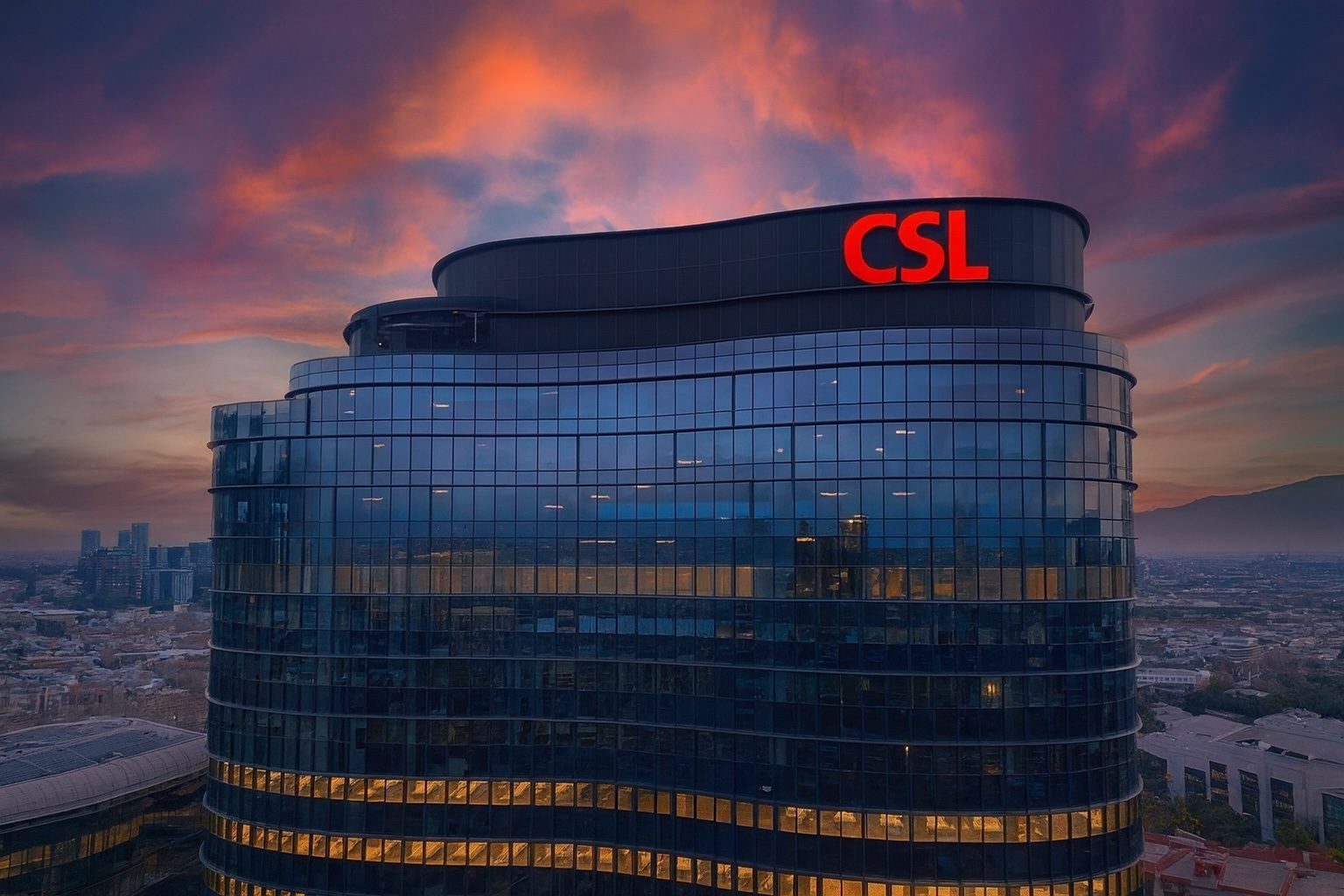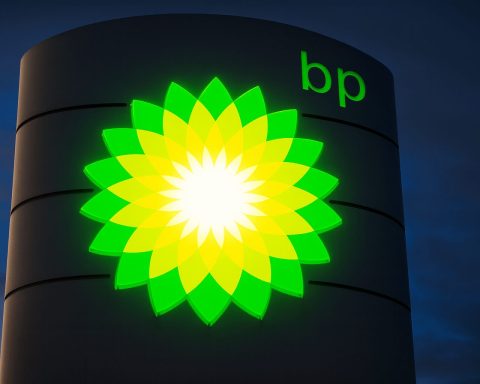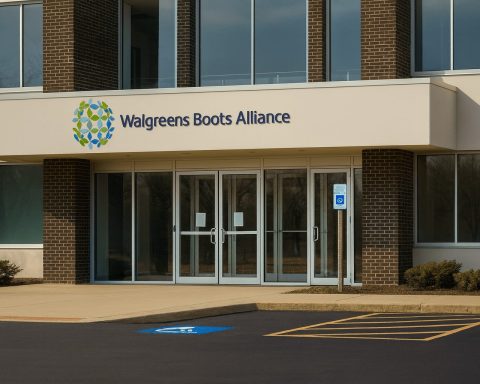CSL Limited (ASX:CSL), long considered one of the ASX’s safest growth names, heads into Monday’s open on 24 November 2025 under a very different spotlight. A bruising year of profit downgrades, restructuring, and a sharp share price fall has collided with a fresh US$1.5 billion expansion plan in the United States and an active share buy-back.
Below is a concise rundown of where CSL stands after Friday’s close – and what’s most likely to shape trading when the ASX bell rings on Monday.
Quick takeaways before Monday’s open
- Last close: CSL shares finished Friday, 21 November, at A$178.85, up 0.29% on the day. [1]
- Big drawdown: The stock is down around 35–40% over the past year and roughly 36% year to date, near the bottom of its A$168–A$290 52‑week range. [2]
- New US growth plan: CSL has announced about US$1.5 billion (≈A$2.3 billion) in US capital investments over five years to expand plasma‑derived therapy manufacturing. [3]
- Restructure in full swing: Management is cutting ~3,000 jobs, closing 22 US plasma centres and targeting up to US$550 million in annualised cost savings by around FY28, alongside a large on‑market share buy-back. [4]
- Guidance cut & vaccine slump: Revenue growth guidance for FY26 has been cut from 4–5% to 2–3%, and profit growth from 7–10% to 4–7%, mainly due to a sharp fall in US flu vaccination rates. [5]
- Buy-back progress: As of 19 November 2025, CSL has repurchased just over 2.0 million shares as part of its on‑market buy-back and capital‑management strategy. [6]
- Valuation reset: Multiple data providers put CSL’s trailing P/E in the low‑20s, well below its 3‑, 5‑ and 10‑year averages, which historically sat in the mid‑30s to low‑40s. [7]
- Analyst and model fair values: Quant models such as Simply Wall St estimate a fair value around A$247, implying the stock could be 20–30% below intrinsic value, though that depends on optimistic margin and growth assumptions. [8]
1. CSL share price snapshot heading into 24 November 2025
At the close on Friday, 21 November 2025, CSL finished at A$178.85 on the ASX, a modest 0.29% gain for the session. [9]
Over the short and medium term, though, the picture is much harsher:
- 30‑day move: Around ‑19%, reflecting a sharp sell‑off after the October guidance downgrade. [10]
- 12‑month performance: Roughly ‑35% to ‑40%, making CSL one of the worst drags on the ASX 200 this year. [11]
- Year to date: Down more than 36% from a starting point near A$280. [12]
For context, the broader ASX 200 is off about 4.6% so far in November, but still slightly positive for the year; CSL’s nearly 40% slump from its peak has been singled out as one of the deepest large‑cap declines in this correction. [13]
Overseas, CSL’s US OTC ADR (CSLLY) closed around US$58.17, up nearly 3% on Friday in New York, which could provide a mildly positive lead for sentiment at Monday’s ASX open – although FX moves and broader risk appetite may still dominate. [14]
2. How did CSL end up here? The 2025 pivot from “market darling” to problem child
Strong FY25 headline numbers…
CSL’s FY25 result, released in August, looked solid at first glance:
- Reported NPAT: ~US$3.0 billion, up 17% at constant currency.
- Underlying NPATA: US$3.3 billion, up 14% year on year. [15]
- Revenue of about US$15.6 billion, up just over 5%, with particularly strong growth in plasma‑derived therapies. [16]
Management emphasised “on‑target” performance, driven by robust demand for immunoglobulin products and a solid contribution from the Vifor iron and nephrology portfolio. [17]
…but a huge transformation program spooked the market
Alongside these numbers, CSL announced a major strategic overhaul:
- ~3,000 job cuts, roughly 15% of the workforce outside the US plasma unit.
- 22 US plasma collection centres closed, representing about 7% of the US network, to focus on higher‑productivity sites. [18]
- Plan to spin off the Seqirus influenza vaccine division into a separately listed ASX company by early 2026. [19]
- Targeted annualised cost savings up to US$500–550 million within three years, with a portion to be reinvested into R&D and high‑priority pipeline projects. [20]
- A share buy-back of about A$750 million and a higher dividend, signalling confidence but also limited immediate growth options. [21]
Despite the profit growth, the ASX reaction was brutal: CSL shares fell about 15% in a single session in August, one of their worst days on record, as investors digested the restructuring risk and uncertainty around the vaccine spin‑off. [22]
Guidance downgrade and vaccine shock in October
The real damage came later. At the October 28 AGM, CSL:
- Cut FY26 revenue growth guidance from 4–5% down to 2–3%.
- Reduced NPATA growth guidance from 7–10% to 4–7% (constant currency). [23]
- Blamed an “unprecedented” decline in US flu vaccination rates, which the company expects to be down around 12% overall and 14% among seniors in the current Northern Hemisphere flu season. [24]
- Delayed the Seqirus spin‑off, saying it would now proceed only when market conditions are supportive. [25]
The market again punished the stock: CSL shares fell as much as 16.6% intraday, hitting their lowest level since 2018. [26]
Analyst commentary has been blunt. One detailed note from Intelligent Investor described this as the third major disappointment in as many updates and argued that management “doesn’t have a grip on the company’s financials,” noting that earnings growth is now expected to remain in the mid‑ to high‑single digits “for the foreseeable future.” [27]
3. Shareholder revolt and governance overhang
CSL has also faced a governance backlash:
- At the October AGM, more than 40% of shareholders voted against the executive pay report, triggering a second “strike” under Australia’s two‑strikes rule. [28]
- A follow‑up spill motion to remove the board failed, but the scale of dissent highlighted deep frustration about pay levels and strategic execution, particularly following the A$17 billion Vifor acquisition and the recent downgrade cycle. [29]
The combination of governance noise and earnings uncertainty has fed a narrative that CSL is no longer the near‑bulletproof growth compounder it once was, even though its underlying businesses (plasma, vaccines, nephrology) remain strategically strong.
4. Fresh catalyst: US$1.5 billion US expansion and capital management
The new US investment plan
On 18 November 2025, CSL announced plans to invest approximately US$1.5 billion over the next five years to expand its US manufacturing footprint for plasma‑derived therapies:
- The capital expenditure will boost onshore production capacity for immunoglobulin (Ig) and other plasma‑derived therapies.
- CSL expects the program to create hundreds of high‑quality US jobs, deepen its presence across more than 40 states and strengthen the US medicine supply chain.
- The plan builds on more than US$3 billion invested in the US since 2018, which has already added over 6,500 jobs and taken US headcount to nearly 19,000, about 65% of CSL’s global workforce. [30]
- The new investments still require CSL board approval, so timelines and phasing could adjust. [31]
From an earnings perspective, this spend is chiefly about securing long‑term plasma supply and margin resilience. It does, however, increase capex intensity in the near term and adds another moving part to an already complex transformation.
Share buy-back: slow but steady
CSL is leaning on capital management to support the share price during the transition:
- As of 19 November 2025, the company had bought back 2,079,952 shares on‑market, including 59,477 shares on the previous trading day, under its ongoing buy-back program. [32]
- TipRanks data shows a current market cap around A$88 billion and average trading volume of about 1.38 million shares per day, so the buy-back is meaningful but not aggressive enough to fully offset selling pressure. [33]
For Monday’s open, traders will be watching whether buy-back activity continues to absorb weakness near the A$175–A$180 range, or if management slows purchases to preserve balance sheet flexibility.
5. What management is promising: FY25 results and Capital Markets Day
At the August FY25 result and the November 5–6 Capital Markets Day in Chicago, CSL’s leadership tried to reframe the story as one of short‑term pain, long‑term gain: [34]
Key messages included:
- Three‑P focus: “Pipeline, Productivity and People” – shorthand for cutting complexity, improving R&D efficiency and sharpening commercial execution. [35]
- Plasma efficiency: The rollout of automation technologies like Rika and iNomi is intended to improve donor throughput and reduce collection costs, allowing CSL to optimise – and in some cases shrink – its plasma centre footprint without sacrificing volume. [36]
- R&D and pipeline: CSL highlighted a late‑stage pipeline including gene therapies (such as HEMGENIX) and other high‑margin specialty products, arguing that reallocated R&D spend plus cost savings should support margin expansion from FY27 onwards. [37]
- Reinvestment of savings: Roughly half of the >US$0.5 billion planned cost savings are expected to be reinvested into innovation and clinical development, with the remainder dropping to the bottom line over time. [38]
For investors weighing Monday’s open, the core question is whether they believe this “reset and rebuild” narrative – or whether further missteps (another downgrade, regulatory issues, weaker demand) will erode confidence further.
6. Valuation: discount to history, but not “bargain basement”
Multiples versus CSL’s own past
Because CSL’s earnings are still growing (albeit slower), the stock has de‑rated rather than collapsed on fundamentals:
- Various data sources put the trailing P/E somewhere between the high‑teens and low‑20s (roughly 19–22x FY25 earnings), versus 3‑, 5‑ and 10‑year averages north of 30x, and even around 40x at times. [39]
- The Shiller P/E (10‑year inflation‑adjusted) is just under 25, near the bottom of its 10‑year range, which previously peaked well above 90. [40]
- CSL’s profit margin sits around 19%, with return on assets near 6–7%, still healthy but no longer “hyper‑growth” metrics. [41]
- The dividend yield is about 1.9%, higher than in many prior years but still modest compared with high‑yield ASX names. [42]
In short, CSL looks cheap relative to its own history, but still expensive versus the broader market and other healthcare names with similar growth rates.
Model‑based fair values and broker targets
Quant and analyst fair‑value estimates show a wide spread:
- Simply Wall St’s narrative‑driven model pegs fair value at ~A$246.96, roughly 25–30% above the current price, assuming cost savings and pipeline execution deliver stronger earnings and margin expansion over FY27–FY30. [43]
- Data collated by TipRanks shows a recent analyst target around A$225 with a Buy rating, implying mid‑20s percentage upside, though the same platform’s technical signals currently flag a “Sell” based on momentum. [44]
- MarketBeat’s news feed highlights that at least one major house, UBS, has reiterated a Buy rating on CSL’s overseas line, suggesting global analysts still view the sell‑off as overdone, even as local brokers trim targets. [45]
For traders and longer‑term investors alike, this mix of fundamental optimism and technical pessimism is exactly what makes CSL a battleground stock into Monday’s trade.
7. Key risks and watchpoints for 24 November and beyond
Heading into the 24 November 2025 open, here are the main issues likely to drive CSL’s share price in the near term:
1. US flu vaccination and policy risk
The October downgrade was driven largely by weaker US flu vaccination rates, which CSL linked partly to policy changes and shifting sentiment towards vaccines in its key US market. [46]
Any further data suggesting:
- a deeper or more prolonged fall in vaccination uptake, or
- additional policy headwinds for vaccines or biologics
could force another round of guidance cuts, putting renewed pressure on the stock.
2. Execution on the US$1.5b US plasma investment
The market has tentatively welcomed the US expansion plan, but investors will want clarity on:
- Capex timing and phasing,
- expected return on invested capital, and
- whether the program can be funded comfortably alongside the buy-back and restructuring costs without stretching the balance sheet. [47]
Any signs of delays, cost blowouts, or regulatory friction in the US could dent the “long‑term growth” argument underpinning optimistic valuations.
3. Progress on the restructure and cost savings
CSL has put a lot of credibility on the line by promising over US$0.5 billion in cost savings while simultaneously maintaining innovation and growth. [48]
Investors will be watching for:
- Updates on headcount reductions and plasma centre optimisation,
- evidence that operational metrics (plasma volumes, collection costs, manufacturing yields) are improving, and
- whether the buy-back and dividend remain intact as restructuring bills fall due.
4. Governance and shareholder sentiment
With two strikes already against the executive pay report, any further misalignment between performance and remuneration could heighten governance risk and keep some institutional investors on the sidelines. [49]
How the board responds – through pay structure changes, clearer KPIs or refreshed leadership – will matter for CSL’s valuation multiple, even if earnings recover.
5. Market technicals and ASX sentiment
Technically, CSL is still in a clear downtrend, and broader ASX risk‑off moves have amplified the sell‑off. [50]
Short‑term traders will focus on:
- whether A$168–A$175 (recent lows) continues to act as support,
- how much buy-back demand appears on the bid, and
- whether any new broker upgrades/downgrades drop around Monday’s open.
8. What this all means for investors before the bell
Putting it together:
- Fundamentals: CSL remains a profitable, globally diversified biopharma leader with strong plasma and specialty therapy franchises and a meaningful late‑stage pipeline. FY25 earnings growth was healthy, even if headline guidance has moderated. [51]
- Headwinds: The company is simultaneously grappling with vaccine demand shocks, a complex restructure, governance noise and political/regulatory uncertainty in key markets – all while trying to convince investors that this is a controlled reset, not the start of structural decline. [52]
- Valuation: The multiple has compressed to levels well below CSL’s long‑run average, but the stock is not “cheap” in absolute terms, especially if earnings growth is stuck in mid‑single digits for several years. [53]
- Sentiment: Analysts and models still see upside from here, with fair values mostly in the A$220–A$250+ range, but technical indicators and price action remain cautious to negative. [54]
For anyone watching CSL into the 24 November 2025 open, the key judgement is simple but uncomfortable:
Is CSL’s current weakness a rare chance to accumulate a high‑quality global healthcare leader at a discount, or a value trap in the making if guidance cuts and policy shocks keep coming?
Only your own risk tolerance, time horizon and portfolio needs can answer that. This article is general information onlyand does not constitute financial advice. Consider seeking professional advice and reviewing CSL’s latest official filings and announcements before making any investment decision.
References
1. www.investing.com, 2. www.investing.com, 3. newsroom.csl.com, 4. newsroom.csl.com, 5. www.reuters.com, 6. www.tipranks.com, 7. www.wisesheets.io, 8. simplywall.st, 9. www.investing.com, 10. simplywall.st, 11. www.investing.com, 12. www.intelligentinvestor.com.au, 13. www.theaustralian.com.au, 14. finance.yahoo.com, 15. newsroom.csl.com, 16. stockanalysis.com, 17. newsroom.csl.com, 18. newsroom.csl.com, 19. www.reuters.com, 20. newsroom.csl.com, 21. www.reuters.com, 22. www.reuters.com, 23. www.reuters.com, 24. www.reuters.com, 25. www.reuters.com, 26. www.reuters.com, 27. www.intelligentinvestor.com.au, 28. www.theguardian.com, 29. www.theguardian.com, 30. newsroom.csl.com, 31. newsroom.csl.com, 32. www.tipranks.com, 33. www.tipranks.com, 34. newsroom.csl.com, 35. newsroom.csl.com, 36. newsroom.csl.com, 37. simplywall.st, 38. simplywall.st, 39. www.wisesheets.io, 40. www.gurufocus.com, 41. finance.yahoo.com, 42. www.intelligentinvestor.com.au, 43. simplywall.st, 44. www.tipranks.com, 45. www.marketbeat.com, 46. www.reuters.com, 47. newsroom.csl.com, 48. newsroom.csl.com, 49. www.theguardian.com, 50. www.theaustralian.com.au, 51. stockanalysis.com, 52. www.reuters.com, 53. www.wisesheets.io, 54. www.tipranks.com







